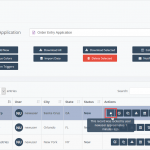Identifying how many Low-Code/No-Code platforms are on the market can be a difficult task since there are so many platforms that offer related features. These may range all the way from extensive form builders and robust front-end designers to more basic components and extensions to existing systems. Should they all be considered Low-Code or No-Code platforms?
Instead of introducing our own judgment to categorize these platforms, we decided to use the categorization from two of the most popular software listing and review websites: Capterra and G2. We have included their Low-Code and No-Code lists in our analysis:
- Capterra Low Code Development Platform page
- Capterra No Code Platform Software page
- G2 Low-Code Development Platforms page
- G2 No-Code Development Platforms Software page
One of the main reasons we used these sites is that each software product is registered by their respective vendors. If a vendor registers their own platform as Low-Code, this indicates their own classification, constituting a more concrete definition of their product.
However, there were many platforms registered under Low-Code and No-Code at the same time. We assumed that if a software has Low-Code features, it should be classified as Low-Code, even if it is also registered under No-Code. Often, vendors will register their products under multiple categories in order to reach a wider audience.
We also aggregated data regarding the founding year and country of origin for each product using various sources, including their official websites and social media pages.
We completed our data collection process in early August 2021. Any platforms subsequently registered through Capterra or G2 would not be included in our analysis, though we intend to update this data annually.
There are 442 Low Code/No-Code platforms
Our analysis shows that there are 266 Low-Code and 176 No-Code platforms, totaling 442 platforms.
53% of all Low-Code platforms vendors are based in United States, followed by India (7%), Germany (5%), and the United Kingdom (5%)
The distribution is a bit more diverse when it comes to No-Code Platforms, although the top 10 countries are very similar to the prior data. Most No-Code vendors are based in the United States with 39%, followed by Germany (7%), India (7%), and the United Kingdom (6%).
We also took a look at the speed of startups being founded in the Low-Code and No-Code space. The chart below shows the number of Low-Code platform vendors that have been founded by year. Although there is a heavier concentration between 2015 and 2017, new platform development has proceeded at a steady pace in the Low-Code arena since early 2000.
The concept of No-Code is a bit newer compared to Low-Code, although there is a similar trend of increased development of new platforms, beginning in 2004 and peaking in 2017.
Note that the numbers presented in this study by no means represent the entire Low-Code and No-Code space. There are certainly more platforms that have not yet been listed in Capterra and G2. However, we believe that the distributions and trends presented here are representative of the overall industry, even if the actual numbers are bound to be higher.









